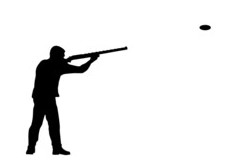Best Foot Position for Clays Shooting
In clay shooting, your stance is your foundation. A proper stance not only enhances your stability but also improves your shooting precision. Think of your stance as the bedrock of your performance; without a solid foundation, you cannot build the skills needed for success. A well-mastered stance allows for consistent and reliable shots, enabling you to track targets more effectively. It’s crucial to adopt a stance that feels comfortable yet robust, offering support and agility.
When considering how to master your stance, think of the body as a unified system. Every part, from your head to your toes, plays a crucial role in maintaining balance and coordination. Your feet, in particular, act as the anchors that support the rest of your body. The ideal stance involves a shoulder-width position, with your weight evenly distributed between both feet. This position helps in absorbing recoil and allows for smoother transitions between shots.
Your stance should accommodate the natural movements of clay shooting. Adopting a slightly forward-leaning posture helps in maintaining equilibrium while keeping your center of gravity over your feet. This posture supports rapid pivots and adjustments, which are essential when tracking fast-moving targets. By mastering your stance, you create a base that maximizes your potential and elevates your clay shooting prowess.

- Right-handed shooters: Place your left foot forward at a 45° angle, with your right foot at a right angle to your left. Your weight should be slightly forward, with about 2/3 on your left leg and the rest on your right.
- Left-handed shooters: Place your right foot forward at a 45° angle, with your left foot at a right angle to your right.
- Feet should be shoulder-width apart
- Toes should point in the same general direction
- Offset your feet and body to the right about 45° if you’re facing directly at the trap house
Stability is the linchpin of effective clay shooting. Without it, even the most skilled shooters can find themselves missing targets. Stability begins with your feet and extends upward through your entire body. A stable foot position ensures that you can withstand the forces generated by firing your shotgun and maintain control over your movements. It prevents unnecessary shifts in balance that can lead to missed shots and inconsistent performance.
To achieve stability, focus on your foot placement. Both feet should be firmly planted on the ground, with a slight bend in the knees to absorb shock. Your lead foot should point toward the target, while your rear foot provides support and balance. This positioning not only stabilizes your body but also aligns your shot with the target, increasing the likelihood of a successful hit.

Moreover, maintaining stability involves continuous adjustment. As you pivot to track targets, your feet should shift subtly to maintain your stance. Practicing these movements helps develop muscle memory, allowing you to react instinctively during a shoot. By prioritizing stability, you lay the groundwork for consistent success in clay shooting, transforming your stance into a powerful tool for accuracy.
Angles Matter: Optimize Your Foot Position Today
Angles play an integral role in optimizing your foot position for clay shooting. The angle at which you stand relative to your target can dictate your range of motion and shooting efficiency. By understanding and adjusting your foot angles, you enhance your ability to engage targets swiftly and accurately. This aspect of foot positioning is often overlooked but can be the difference between a miss and a hit.
To optimize your foot angles, start by positioning your lead foot at a slight angle towards the direction of the target’s trajectory. This angle facilitates smoother swivels and maintains your body in an optimal position for shooting. Ensure your back foot complements this angle by offering support and maintaining balance. The interplay between these angles allows for fluid movements, essential for tracking unpredictable clay targets.
Experimentation is vital in finding the angles that work best for you. Every shooter is different, and what might work for one may not work for another. Practice with various angles until you find the most comfortable and effective stance. By optimizing your foot angles, you not only improve your shooting technique but also increase your confidence, knowing you can trust your stance under pressure.
A well-placed foot position translates to better aim, smoother follow-through, and ultimately, more shattered clays. Precision footwork can turn an average shooter into an exceptional one, highlighting the importance of this often-overlooked element.
In clay shooting, success is determined by more than just your aim; it hinges on your entire stance and foot positioning. By mastering your stance, prioritizing stability, optimizing your foot angles, and perfecting your foot placement, you unlock the potential to elevate your shooting performance.
# # #


Comments